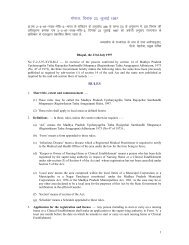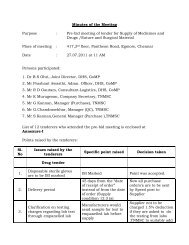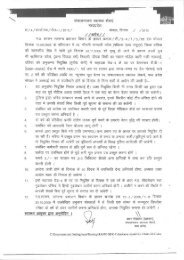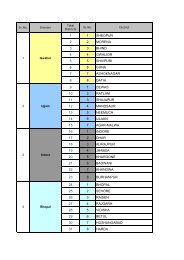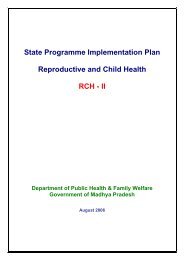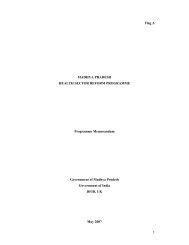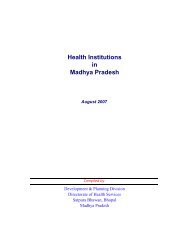XI Five Year Plan 2007-2012 - Public Health & Family Welfare ...
XI Five Year Plan 2007-2012 - Public Health & Family Welfare ...
XI Five Year Plan 2007-2012 - Public Health & Family Welfare ...
Create successful ePaper yourself
Turn your PDF publications into a flip-book with our unique Google optimized e-Paper software.
1. Introduction<br />
Diversity in Socio-economic conditions is in the nature of the State. Huge area and thin<br />
density of population as compared with other states makes the State a difficult terrain,<br />
hard to reach and inaccessible. In terms of Human Development Index (HDI) with an<br />
index value of 37 the State lags behind the all India average of 45. While taking into<br />
account the health indices e.g. Total Fertility Rate (TFR), Infant Mortality Rate (IMR),<br />
Maternal Mortality Rate (MMR) and Birth Rate, the State is considered as one of the<br />
BIMARU state. Population of the State has doubled in 30 years, between 1951 and<br />
1981, from 26 million to 52 million. It is estimated that, it will double again in following 34<br />
years, that is, in the year 2015 the state’s population would be around 105 million. Every<br />
year nearly 1.4 million people are added into the state’s population.<br />
Madhya Pradesh has the credit of initiating the implemention of the Panchayati<br />
Raj Adhiniyam 1993. State has 22029 PRIs with about 3.20 lacs elected<br />
representatives, of whom 1.30 lacs are women. Women members of elected<br />
bodies have a vital role to play in the process of achieving stabilised population<br />
and implementation of reproductive heath services to the community. State govt.<br />
has passed an act in 1995 which will enable District <strong>Plan</strong>ning Committees,<br />
popularly known as Zila Sarkar, to prepare consolidated development plan for the<br />
entire district. DPC have been made responsible for the implementation and<br />
monitoring of the population stabilisation efforts in the district.<br />
Population is merely not a problem as long as we find our self in a position to<br />
cater the basic needs of the people like education, health, food, housing,<br />
electricity, safe drinking water etc. Today, our natural resources as well as<br />
financial resources are sinking and we are able to fulfill the basic needs of the<br />
people. Although state government is committed to improve the quality of the life<br />
of its people, but providing education, heath, safe drinking water and housing to<br />
every one is beyond the capacity of the government. Not only this our resources



![Essential Drug List [EDL] - 2002 - Public Health & Family Welfare ...](https://img.yumpu.com/49520857/1/184x260/essential-drug-list-edl-2002-public-health-family-welfare-.jpg?quality=85)
